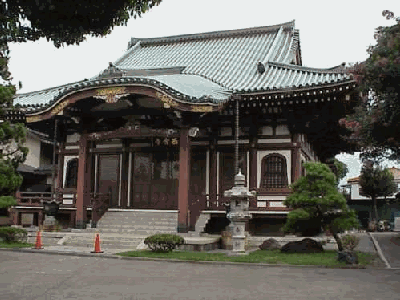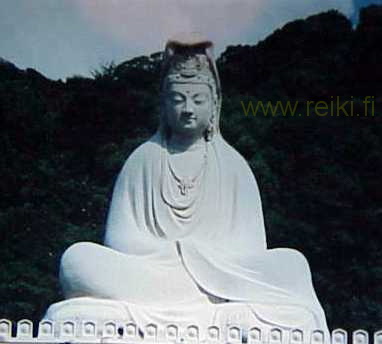

Dr. Mikao Usui
Writer: Asunam Reiki Master/Teacher
http://www.asunam.com/index.html
Mikaomi Usui was born in the village of Yago in Gifu prefecture in Japan on August 15, 1865, where his ancestors had lived for eleven generations. His family belonged to the Tendai sect of Esoteric Buddhism. When he was four, he was sent to a Tendai monastery to receive his primary education. He was a very bright student.
Usui pursued higher education and received a doctorate in literature. He spoke other languages fluently, and became well versed in western medicine, theology, and philosophy. Like many of the intellectuals of his day, Usui was fascinated by the "new science" coming from the West. During this time frame (1880's & 1890's) the Meji Emperor had begun a new regime that overthrew the Shoguns, and Japans feudal states were brought under the direct control of the central government, which was relocated in Tokyo. Under this new regime, the "old ideas" were discarded in favor of modernization, and the country was opened to Westerners for the first time. There arose a frenzy for transforming the modes of daily life into Occidental fashions, which were identified with Western civilization. In every department of social and political life, men furnished with some knowledge of modern science were promoted to high and esteemed positions. Men of "new knowledge" were sometimes idolized, and the ambition of every young man was to read the "horizontal writings" of Occidental books. The nation as a whole asked eagerly for the benefits of the new civilization. The motto of the era was "Enlightenment and Civilization."
Usui's father, Uzaemon, was an avid follower of the new regime and adopted progressive political views. Usui had great respect for his father and was very influenced by this national obsession to become "westernized". He traveled some, and continued to study western medicine and science. In addition he befriended several Christian missionaries who had learned medicine at Harvard and Yale.

Saihoji Temple
During the time when Japan was opening its doors to the West the first arrivals were the missionaries, both Catholic and Protestant. They set up their operations in three main districts. One was in Yokohama, under the influence of the Rev. John Ballagh. Here they started their medical work and brought with them knowledge of Western medical science. These missionaries became influential leaders and formed the first Japanese Christian church in 1872.
At the same time, a Japanese named Neesima had returned from his travels in America where he had been converted to Christianity. In 1876 he founded the Doshi-sha school in the city of Kyoto, a city which had been the stronghold of Buddhism for many centuries. Doshi-sha became a theological seminary that embraced the slogan "United in Ideal." In the late 1880's, Doshi-sha introduced "liberal theology" and invited Unitarian Missions from America. This institution became a focal point for missionaries to hold seminars and classes on liberal Christian thought.
They were very open to the ideas of Darwinism and scientific views of life. Because of Usui's extensive education in theology and science, coupled with his friendship with certain missionaries, it was likely that Usui attended some of these seminars - perhaps even being asked to speak. However it is clear from his personal notes, that he did not embrace Christianity and was quite skeptical of the doctrine.
Throughout Usui's early adulthood, he live in Kyoto with his wife Sadako Suzuki and two children, a son - Fuji, and a daughter. He was a businessman and had varying degrees of success. He did encounter some difficulties, but his strong determination and positive outlook helped him to overcome these difficulties. He continued his spiritual studies and became involved in a spiritual group name "Rei Jyutsu Ka." This group had a center at the base of the holy mountain Kurama-yama, north of Kyoto. There is an ancient Buddhist temple, Kurama-dera on the mountain, which has a very large statue of Amida Buddha and houses many artifacts that are part of the "National Treasure."

Statue of Kwan-on (aka Kannon and Kwan Yin) at Ryozen - Kwan-on
Extra By Attila

| Birth: |
Sep. 25, 1842 Delaware County New York, USA |
| Death: | 1920, Japan |
|
American educator. Son of John Hamilton Ballagh and Ann Prudenta (Craig) Ballagh, both of County Monaghan, Ireland. Brother of Rev. Dr. James Hamilton Ballagh. He graduated from the Cherry Academy in 1864. Married Mrs. Lydia E. Benton in Tokyo. In 1875, the reins of the Hepburn Academy, founded by James Curtis Hepburn, were handed over to John Ballagh and his wife. From that date forward it was known as the Ballagh Academy. |
|
|
Burial: Aoyama Cemetery Tokyo Tokyo Metropolis, Japan Plot: Foreign Section: |
|
H In 1875, he decided to entrust the Hepburn Academy to the religiously devout specialist in academic education John Craig Ballagh (1842 – 1920) and his wife. From that point, the Hepburn Academy came to be called the Ballagh School. Hepburn furthermore closed
his medical facility in 1876 and moved to a new residence in the Yamate area of Yokohama. Hepburn held Ballagh in high esteem as an educator, as evinced by the following letter, which he wrote on April 6, 1882:
"There is no other gentleman than he who can manage my school. He is a man who is steady, patient, and kind, and he holds the deepest concern regarding the school. Mr. Ballagh will be the students' father, their friend, and in faith he shall command them well. If you know the young men of Japan,
then you will also come to know that what Mr. Ballagh is doing is quite considerable. Those who do not know of the young men of Japan may think them angels, but in fact they are a group who are ignorant and impudent, selfish, and do not listen to what they are told."
Copyright Attila Kupi - Reiki TMI ® www.reiki.fi Finland - Helsinki